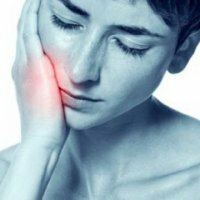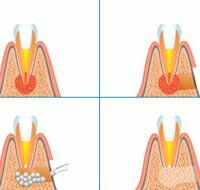Sedation - treatment of teeth in sleep
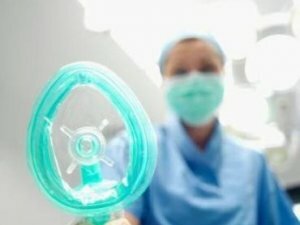
Description
Sedation is a condition in which a patient falls asleep before dental treatment in a relaxed state. Sedation is achieved with the help of hypnotic harmless drugs. It is completely painless. Sleep occurs immediately after the administration of the drug. You can get a soothing or hypnotic effect. This will depend on the dosage of the agent administered and the patient's wishes.
You can awaken a patient at any time. Consciousness does not turn off. The patient is able to perform all the commands of the dentist.
Types of sedation
Depending on the depth of sleep, there are 3 types of sedation:
- Easy sedation( relaxing, superficial).
- Deep sedation( deep sleep).
- General sedation( dental anesthesia).
The method of drug administration distinguishes sedation by:
- Inhalation.
- Oral.
- Intravenous.
In inhalation sedation, nitrous oxide or a mixture of oxygen and nitrogen is used. It is a gas that has a sweetish pleasant smell, which the patient receives through a mask on his nose. The blood is saturated with gas for 5 minutes. The instruments control the depth of sedation. After the treatment is completed, the gas is removed from the body in a few minutes. The patient hears the doctor's commands.
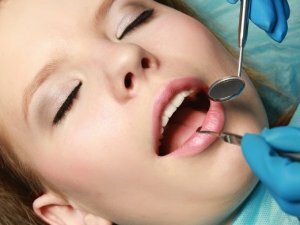 Oral sedation. Sleeping cocktails and pills cause an average degree of physical relaxation, but the patient can hear the doctor's loud requests.
Oral sedation. Sleeping cocktails and pills cause an average degree of physical relaxation, but the patient can hear the doctor's loud requests.
Intravenous sedation with propofol. The introduction of hypnotics causes deep sedation. The patient falls into a state of deep sleep, the doctor's team can not perform.
Most commonly, intravenous anesthetic agents are used for intravenous sedation:
- benzodiazepines( midazolam);
- propofol;
- thiopental sodium;
- rarely narcotic analgesics.
Before starting dental treatment, the doctor performs local anesthesia in the oral cavity. Sedation can only provide sleep, but not anesthesia.
Treatment is monitored by an anesthesiologist on a cardiac monitor. The specialist sees the patient's blood pressure, heart rate, monitors the oxygen saturation of the blood flow, removes the ECG.
Therefore, treatment can be carried out in patients with cardiac and vascular pathologies.
What is the difference between sedation and general anesthesia?
It is recommended to begin treatment according to international standards with the use of medical sedation. If this can not be done, then we should proceed to general anesthesia. But general anesthesia should be performed in the hospital, where there is an intensive care unit.
How safe is sedation?
 When observing the technology of sedation, there were no unpleasant outcomes or complications for many years. Anesthesia does not inhibit the respiratory and vomiting centers. They do not have a narcotic effect. A person can be awakened at any time and withdraw from the body of medicines.
When observing the technology of sedation, there were no unpleasant outcomes or complications for many years. Anesthesia does not inhibit the respiratory and vomiting centers. They do not have a narcotic effect. A person can be awakened at any time and withdraw from the body of medicines.
Advantages of sedation
Sedation has advantages over general anesthesia:
- uses milder drugs;
- is mildly awakening than with general anesthesia;
- there is no vomiting and nausea in the patient;
- completely removes the feeling of fear and psychological discomfort;
- treatment is indicated for patients with general-disease;
- there are no negative memories of the treatment process;
- the possibility of holding a large number of procedures at a time. The patient can stay in the armchair for up to 8 hours without fatigue.
- depth of sleep - at the patient's choice.
Indications
Dental treatment during sleep can be performed with:
- endocrine disorders;
- immune system problems;
- pathology of the respiratory tract;
- heart disease;
- vascular disease;
- allergic reactions to any anesthetic;
- pronounced dentofobia( strong fear of treatment).
Dental treatment of teeth is also shown in severe somatic pathologies:
- craniocerebral trauma;
- certain diseases of the cardiovascular system;
- type 1 and type 2 diabetes mellitus;
- with increased gag reflex;
- oncological diseases;
- after serious surgical interventions.
Contraindications
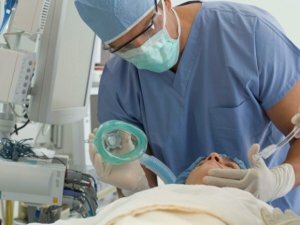 Contraindications to dental treatment in the sleep of teeth are:
Contraindications to dental treatment in the sleep of teeth are:
- ARI;
- diseases of the muscular and nervous system;
- myasthenia gravis;
- alcohol or drug dependence;
- mental illness, accompanied by aggression and arousal;
- exacerbation of chronic diseases;
- craniocereberal trauma;
- bronchial asthma;
- circulatory system diseases;
- overfilled with stomach;
- pregnancy;
- breastfeeding.
After treatment it is impossible to drive a car for 10 hours because of reduced speed of psychomotor reactions.
Preparation for sedation
No special preparation for treatment is required. Before the treatment for 4 hours you can not eat, drink alcohol and carbonated drinks, strong coffee or tea.
Sedation for children
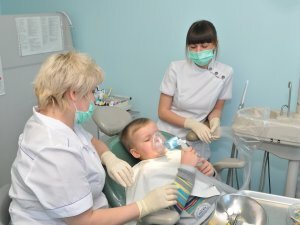 Pediatric dentistry also uses this method of dental treatment. Sedation is the only way to qualitatively cure teeth to a small child. The inhalation method is considered the most preferable. A children's oxygen mask is used. Kids are offered to try on a beautiful and pleasantly smelling fruit mask. Treatment is recommended for children from 3 years of age.
Pediatric dentistry also uses this method of dental treatment. Sedation is the only way to qualitatively cure teeth to a small child. The inhalation method is considered the most preferable. A children's oxygen mask is used. Kids are offered to try on a beautiful and pleasantly smelling fruit mask. Treatment is recommended for children from 3 years of age.
The main advantages of sedation under the mask:
- Assisting in the treatment of teeth to hyperactive children.
- An opportunity to treat the youngest children who are afraid of the procedure of treatment.
- Minimally short exposure time to sedation on the nervous system.
- Quick removal of the sedative causing agent with the expiration of the baby.
Contraindications
For ENT diseases, adenoids, difficult nasal breathing and the presence of chronic diseases, the use of a sedative mask is not recommended.
Contraindications revealed by a pediatrician. He must examine the child before the sedation procedure begins.


